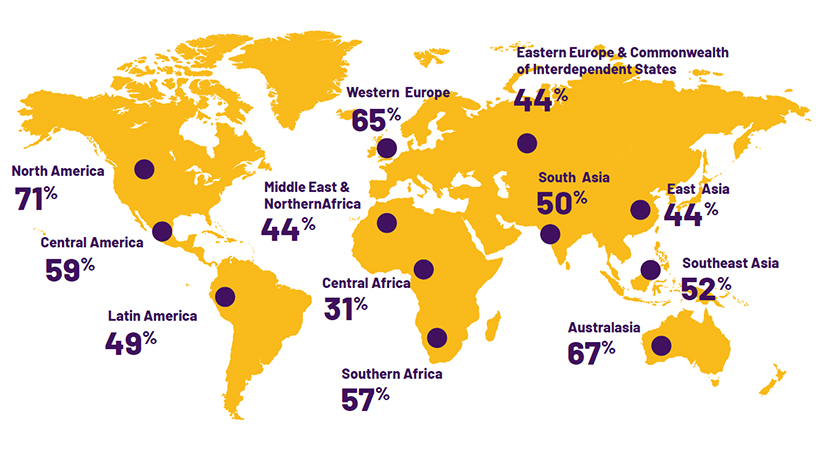Governance
Child Sexual Abuse
- 22 Oct 2021
- 4 min read
Why in News
Recently, a report titled the Global Threat Assessment Report 2021, released by WeProtect Global Alliance has revealed that Covid-19 had contributed to a significant spike in child sexual exploitation and abuse online.
- The report outlines the scale and scope of child sexual exploitation and abuse online, as well as an overview of the global response to the issue.
- WeProtect Global Alliance is a global movement of more than 200 governments, private sector companies and civil society organisations working together to transform the global response to child sexual exploitation and abuse online.
Percentage of People Affected by Online Sexual Harm
Key Points
- Highlights of the Report:
- In the past two years, the reporting of child sexual exploitation and online abuse has reached its highest level.
- Covid-19 created a ‘perfect storm’ of conditions that fuelled a rise in child sexual exploitation and abuse across the globe.
- According to the Internet Watch Foundation, the rise in child ‘self-generated’ sexual material is another worrying trend.
- Transgender/non-binary, LGBQ+ and/or disabled were more likely to experience online sexual harms during childhood.
- Indian Scenario:
- During the pandemic, the National Center for Missing and Exploited Children (NCMEC) indicated 106% increase in reports of suspected child sexual exploitation to its global CyberTipline.
- NCMEC is a non-profit organization (NGO) established by the United States Congress.
- Further, during the Covid-19 lockdown in India, there was a 95% rise in searches for child sexual abuse material.
- During the pandemic, the National Center for Missing and Exploited Children (NCMEC) indicated 106% increase in reports of suspected child sexual exploitation to its global CyberTipline.
- In the past two years, the reporting of child sexual exploitation and online abuse has reached its highest level.
- Problems Related to Child Sexual Abuse:
- Multi-layered Problem: Child sexual abuse is a multi-layered problem which negatively impacts children’s physical safety, mental health, well-being and behavioural aspects.
- Amplification Due to Digital Technologies: Mobile and digital technologies has further amplifies child abuse and exploitation. New forms of child abuse like online bullying, harassment and Child Pornography have also emerged.
- Ineffective Legislaton: Although Government of India has enacted the Protection of Children against Sexual Offences Act 2012 (POCSO Act), it has failed to protect child from sexual abuse. The reasons for this can be following:
- Low Conviction Rate: The rate of conviction under the POCSO act is only about 32% if one takes the average of the past 5 years and the percentage of cases pending is 90%.
- Judicial Delay: The Kathua Rape case took 16 months for the main accused to be convicted whereas the POCSO Act clearly mentions that the entire trial and conviction process has to be done in one year.
- Unfriendly to Child: Challenges related to age-determination of the child. Especially laws that focus on biological age and not mental age.
Indian Initiatives for Preventing Child Sexual Abuse
Way Forward
- Comprehensive Framework: The report calls for prioritising prevention activities against abuse, creating safe online environments for children, besides calling on all with a role to protect children to work together to dramatically improve the response.
- Multi Stakeholder Approach: Developing a comprehensive outreach system to engage parents, schools, communities, NGO partners and local governments as well as police and lawyers to ensure better implementation of the legal framework, policies, national strategies and standards.





